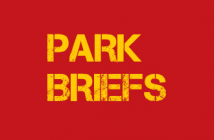An accident is rarely the result of a single failure—it almost always stems from a series of failures, often small ones. To stack the odds in your favor and interrupt that cascade of events leading to a bad result, take a systems or linked approach to inspections and audits.
To be clear, this is not a how-to-inspect article. That is specific to your installation. This is more of a things-to-ask-yourself piece, to challenge your perceptions of what you might want to inspect, and how.
Start by thinking about inspection as a cyclical process. Note that no link in this cycle is more important than any other link, as it is a continual, ongoing process. To illustrate that, let’s start with what I consider link 2.
LINK 2: OPERATIONAL INSPECTIONS
Operational inspections are the primary frontline defense against incidents. These inspections are done by managers, shift supervisors, operators, and maintenance teams. Some are more obvious than others.
The Obvious:
- daily, weekly, and monthly physical inspections
- seasonal setup inspections
The Less Obvious:
- audit of waivers for accuracy and ability to locate a specific waiver (yes, even if it is electronic)
- training audit (not only signing off that everyone was trained, but are they still doing it right? Ensure staff are not developing short cuts or bad habits, forgetting things, etc.)
- trainer audit (who trained your trainer, how long ago, did they have a syllabus or training plan, etc.)
- audit of your SOP vs. the manufacturer’s manuals—do they align?
- audit of new equipment receiving inspection and tracking logs
Things to ask yourself about operational inspections:
- Are the persons doing this trained for it?
- Do they have the necessary tools and experience?
- Do you have a built-in redundancy or double check? Is the same person or skill level doing your daily, weekly, and monthly inspections, or do you have a system for a more skilled person to catch what others might miss?
LINK 3: NON-OPERATIONAL INSPECTIONS
Your organization may or may not have the following resources, but you can assign a manager or supervisor to perform them.
- Health and Safety: To provide a variety of helpful inspections, from ergonomics to hazard/risk assessments.
- Internal Audit: To compare and review manuals or other SOP or best practices to make sure you’re doing what you have written down.
- Internal Compliance: To ensure that you’re following all of your region’s regulatory requirements, or any applicable industry standards.
- Secret Shoppers: These often tell you far more than any formalized inspection. Invite a family member or friend, and advise them on what to look for, from guest service to technical tasks. Ask them to rate you.
LINK 4: EXTERNAL INSPECTIONS
A few external inspections to consider:
Professional Inspection: Often, a company that only does inspections has a very unbiased opinion and sees things that a manufacturer might not see in its own product. Specify the scope clearly—this can range from structural inspections only to documentation audits only, or both.
Manufacturer Inspection: The manufacturer knows the system well and has likely seen more instances of product misuse than any other inspector. This includes both common and uncommon issues.
Insurance Services: Regardless of your size, your insurer is a great resource. Your agent will happily provide you complimentary services with expert consultants in any of the non-operational inspections, as it helps protect their interests.
Regulatory Inspections: Whether your regulator requires annual state inspections or provides spot checks, these can be a very beneficial resource and should not be feared. If your state provides only random/sporadic inspections or relies on professional inspectors, ask if there’s a program for voluntary visits. These are often an opportunity for the state to provide you with non-enforcement feedback. Be sure to contact your regulator and ask them if they have a program like this, and be very sure you understand all the rules before agreeing to it.
Peer Reviews: These can be incredibly fun and informative. Invite a peer you respect and want to learn from to come out and perform a review. Let him or her take a look at your operation and provide their perspective. Often, they will ask you to do the same, and you will get twice the learning as you audit and see their program. Tip: Try and pick a topic or aspect of business to focus on, not just a general tour, so the time is more directed on an actual inspection/audit.
LINK 5: REACTION TO INCIDENTS
Despite our best efforts, bad things are going to happen, whether it is a near miss or an actual incident. Have a procedure to do two things:
1. Accident Investigation. Use a systematic and well-thought-out form for collecting facts, not opinions, for both guest and staff incidents. Have your legal team help you create this form and help you do an annual training on how to properly fill it out. Done well, these forms can be incredibly helpful—and if done wrong, can be incredibly damaging.
2. Root Cause Analysis. There are many different models you can use, but any good root cause analysis tool should help you identify not only the primary
cause, but also many contributing factors that led to the incident. Often a tool like this will help pinpoint many gems of information that can prevent future issues.
LINK 1: ASSESSMENT AND EVALUATION
This is the stage where you and your core leadership team (key staff members, insurance representative, legal representative, etc.) take a look at where your risk is, and identify the leading or lagging indicators that help you assess where that risk really lies. Some questions to ask yourself:
Leading Indicators
- What keeps me up at night?
- Where are the highest risks of failure, both mechanically and operationally?
- What near misses have we had?
- Every year our regulator or inspector finds…
Lagging Indicators
- What incidents have we had?
- What incidents have I seen in the industry, but not at my site?
- What workers’ compensation claims have I had?
- Every year, X, Y or Z is a problem.
These questions help identify critical areas, not defined by your manufacturer, that nonetheless might need inspection or heightened inspection. Then, create a list of things you have identified, and rank them on a scale of 1 (low) to 10 (high) for both probability and severity, to form a risk index, as here. 
Once you have identified your highest-risk issues, make a plan. The plan should:
- determine which risks you want to address with an inspection
- identify the resources you have to perform the inspections (only commit to what you can accomplish)
- highlight what type of an inspection will reduce risk most. You may do more than one type for high risk index items.
- suggest what the inspection questions or format will be
- state who will be doing the inspection
- assign a person to be responsible for addressing and logging any fixes
- set a schedule for when the audit will be done in both frequency and sequence.
FINAL THOUGHTS
A program is only going to be as good as you and your staff’s dedication to perform the tasks and to embrace the pain and learning that comes from a robust inspection and audits program.
- To make it more palatable, frame the program as a learning, non-punitive program, to encourage your staff to embrace the higher tier inspections/audits without fear.
- Set a calendar of what inspection or audit you’re going to do and when. Then stick to it!
- Challenge yourself to do inspections when your volumes are high, as that’s a better representation of what is really happening. Don’t focus only on your slow times.
- The inspection/audit is only good if you fix things!
- A fix is only good if you document it (that is, draft new procedures, keep and review re-training and maintenance logs, etc.).
- This is a living, ongoing process. Start small, then grow and fine-tune the program each year to improve and strengthen your chain.
- Challenge your view of what an inspection is, and who should be doing it. See how strong you can make each link in your chain.






